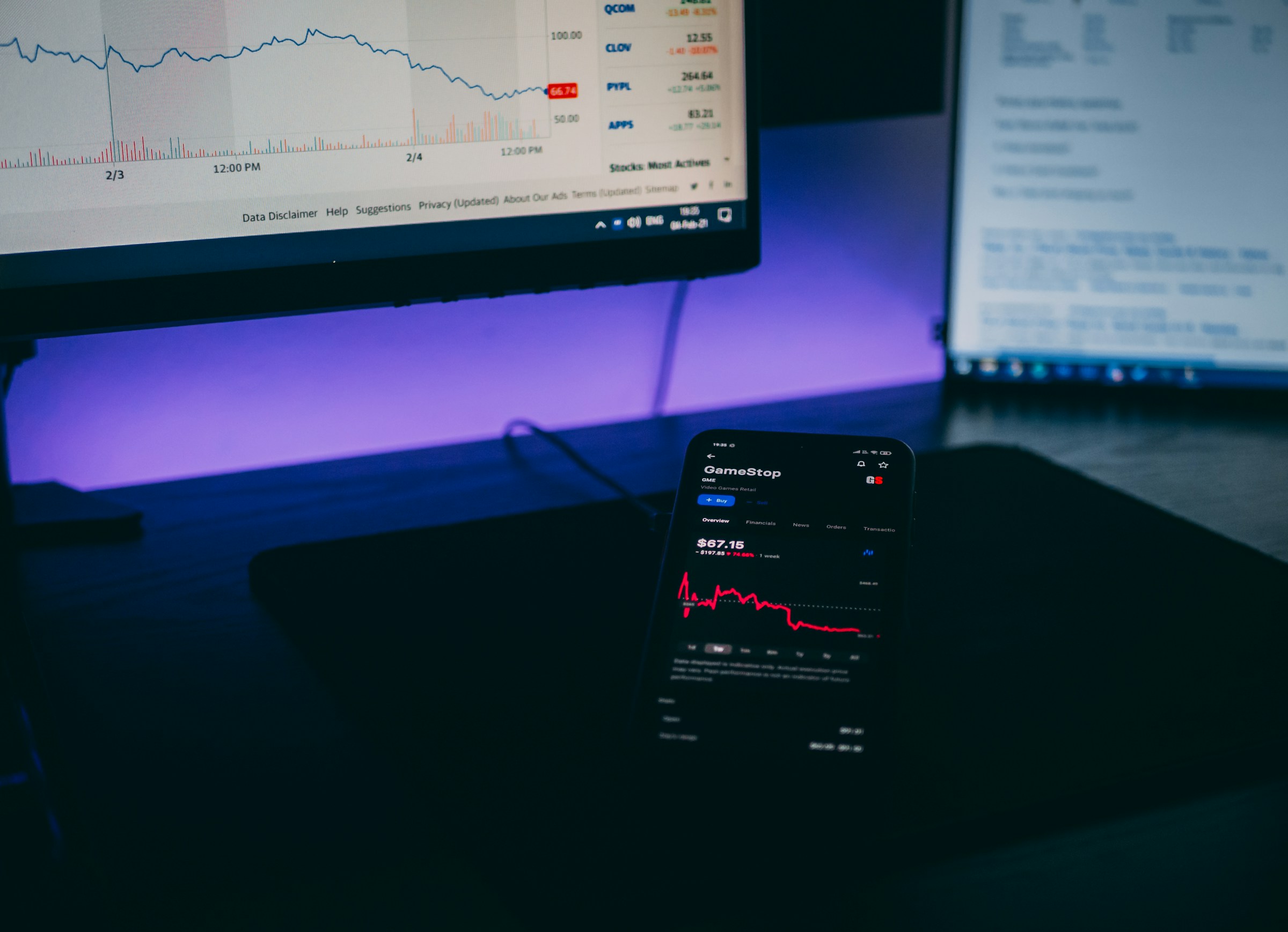How Long Does It Take to Learn Trading + 11 Tips to Learn Trading Fast?
How long does it take to learn trading? Discover key timelines and 11 practical tips to accelerate your trading journey with confidence.

Learning to trade is like learning to play a musical instrument. It takes time, patience, and practice. But how long does it take to learn trading? That depends on several factors, including your background, experience, and level of commitment. Some traders may be able to master the basics in a few months, while others may take years to become proficient. One way to accelerate your progress is by studying smart money trading—a strategy that focuses on understanding how institutional investors move the market. By learning to spot patterns in liquidity, volume, and price action, you can make more informed decisions and improve your overall trading performance.
Speaking of making the most of what you have, Aqua Funded’s funded trading program offers a great way to maximize your trading potential with the resources you have.
Is Trading Easy to Learn?

1. The Unpredictable Nature of Markets
Trading involves making educated guesses about future price movements, and it’s a challenging game. Markets don’t move predictably. Global events can disrupt even the most well-established trade setups. Big players, such as hedge funds, can influence prices in ways that retail traders may not foresee. Even seasoned traders can be caught off guard by false breakouts and sudden reversals. This makes trading a continuous learning journey.
How Brokers Can Help
Modern online brokers offer tools to help traders anticipate market moves. Real-time news feeds keep traders updated on global events. News sentiment analysis provides insights into positive or negative financial news. Data-powered alerts help spot potential trade setups based on historical data. These tools give traders better decision-making insights.
2. The Psychological Battle: Fear, Greed & Overtrading
Trading isn’t just about charts; it’s a mental game. Emotional traps, such as the fear of missing out or revenge trading, can cause traders to abandon their strategy and make impulsive decisions. This leads to poor risk management and bigger losses.
How Brokers Can Help
Good brokers offer tools to help traders stay disciplined. Trade journaling tools help track emotions and performance. Risk management features, such as negative balance protection and daily loss limits, keep traders in check. Social and copy trading enable traders to learn from experienced professionals. Education and market insights provide training in risk management and trading psychology.
3. Risk Management: The Often Overlooked Key
Risk management is what distinguishes successful traders from others. Beginners often risk too much per trade, don’t use stop-loss orders, or trade with high leverage. Without risk management, a single bad trade can wipe out progress.
How Brokers Can Help
Brokers offer tools to help protect traders’ capital. Customizable stop-loss and take-profit tools encourage the development of innovative exit strategies. Position size calculators help control exposure. Leverage restrictions for beginners prevent account blowouts. These features increase trader longevity and help them survive the learning curve.
4. The Steep and Time-Consuming Learning Curve
New traders often think they can master the markets quickly. But it typically takes years to develop an edge. There’s no one-size-fits-all strategy, and the market is constantly evolving. Without proper education, traders are left guessing.
How Brokers Can Help
Top brokers provide comprehensive trading academies with structured lessons and live coaching. Demo accounts with live market conditions allow traders to practice risk-free. On-platform trading simulations help test strategies without financial risk. By investing in education, brokers create smarter, more successful clients.
Related Reading
- How Much Money Do You Need to Start Trading
- What Challenges Do Traders Face?
- How to Multiply Your Money
- Futures vs Stocks Trading
- Why is Trading So Hard
- How to Swing Trade
- How to Start Trading With No Money
How Long Does It Take to Learn Trading

General Timeline for Learning Trading
1. First 3 to 6 Months:
Get a grip on the basics. Discover markets, order types, and fundamental strategies, including technical analysis. This is your foundation.
2. 6 to 12 Months:
Start developing your trading psychology. Focus on basic risk management and begin executing trades. This phase is about understanding your emotional responses.
3. 1 to 3 Years:
Focus on achieving consistent profitability. Master discipline and learn to navigate market cycles. This is where you become a more refined trader.
4. Beyond 3 Years:
Aim to become a confident and strategic trader. By now, you should have a personal trading system that works for you.
While some traders may see profits within a year, most take at least 2–3 years to achieve sustainable success.
Factors That Affect How Long It Takes to Learn Trading
1. Mindset and Psychology
Trading is not just about numbers and charts; it’s about managing emotions. Discipline, patience, and a long-term perspective enable you to learn more effectively. Fear, greed, and overconfidence can hinder your progress. Train your mind to stay calm during losses and not get carried away by wins.
2. Quality of Education
The quality of your education matters. Learning from professional mentors or reputable trading courses can accelerate the process. Trial and error without guidance often leads to repeated mistakes. Find mentors who trade live and provide risk-managed systems, not just theory.
3. Time Devoted to Practice
The time you spend practicing is crucial. Part-time traders may take 2–3 years to become consistently profitable, while full-time traders might achieve this in 1–2 years. Focused, reflective practice is more effective than passive learning.
4. Capital and Risk Management
Starting with unrealistic capital or poor risk management can set you back. Proper capital allocation and low-risk exposure help you stay in the game long enough to learn. Initially, prioritize preserving capital over generating profits.
5. Experience Through Real Trades
Real trading experience is invaluable. The emotional stakes of using real money sharpen your learning. Keep a trading journal and review your trades regularly to accelerate progress.
6. Consistency and Commitment
Trading is a skill that requires serious effort. Many fail because they lack perseverance during tough periods. Treat trading like a business: build processes, review results, and continuously improve.
7. Strategy Simplicity and Alignment
Chasing complex strategies or constantly switching systems can hinder your progress. Success comes faster when your plan fits your personality and is thoroughly backtested.
8. Mentorship and Community Support
Access to experienced mentors and peer traders can help you avoid common pitfalls. Community feedback accelerates troubleshooting and fosters accountability. Trading can be a lonely experience, so having a support system is beneficial.
9. Balancing Trading with Life
Balancing trading with other responsibilities can slow your progress. However, with focused learning, even part-time traders can succeed with the right system and patience.
10. Market Conditions
Market conditions affect your learning. Some periods are more suitable for certain strategies. Real learning occurs when you trade across different market conditions and adjust your system accordingly.
11 Tips to Learn Trading Fast

1. Unlocking Trading Potential with AquaFunded
Dive into trading without risking your own money. AquaFunded gives you access to accounts up to $400K, offering the most flexible trading conditions around, no time limits, easy profit targets, and a generous profit split. Join over 42,000 traders who’ve already claimed more than $2.9 million in rewards. AquaFunded supports you with options for instant funding or skill challenges. Plus, you keep up to 100% of what you earn.
2. Stay Informed: Knowledge Is Everything
Keep up with the latest stock market news and events. This includes interest rate plans from the Federal Reserve System, economic indicators, and other crucial financial news. Create a wish list of stocks you’d like to trade and stay informed about these companies and the broader market. Bookmark reliable news sites and stay informed.
3. Allocate Your Funds Wisely
Decide how much capital you’re willing to risk on each trade. Successful traders often risk between 1% and 2% of their account per trade. For example, if you have a $40,000 account and are willing to risk 0.5% per trade, your maximum loss is $200. Only trade with funds you can afford to lose.
4. Dedicate Time to Trading
Day trading demands your time and focus. Most of your day will be spent tracking markets and spotting opportunities. Avoid day trading if your schedule is already tight. Quick thinking and fast movement are essential.
5. Begin with Small Steps
Start by focusing on one or two stocks per session. It’s easier to track and find opportunities with fewer stocks. Trading fractional shares is now common, allowing you to specify smaller amounts. If Amazon shares are at $170, many brokers will enable you to buy a fractional share for as low as $5.
6. Steer Clear of Penny Stocks
While low prices may tempt you, steer clear of penny stocks. These are often illiquid, and hitting the jackpot with them is unlikely. Many stocks under $5 become delisted from major exchanges and are only traded over the counter. Avoid these unless you’ve done thorough research.
7. Timing Is Crucial
Many orders execute when markets open, causing price volatility. Experienced traders can recognize patterns and place orders at the right time to maximize profits. Beginners should observe the market without trading in the first 15 to 20 minutes. The middle hours are usually less volatile, while the final hours tend to see more activity.
8. Use Limit Orders to Cut Losses
Decide on the types of orders you’ll use for trades. Market orders are executed at the best available price but don’t guarantee a specific price. Limit orders guarantee the price but not execution. They allow you to trade with precision, setting the price for execution. If the market doesn’t reach your price, your order won’t be filled.
9. Be Realistic with Profits
Your strategy doesn’t need to succeed all the time. You can profit from 50% to 60% of your trades if you win more on your successful trades than you lose on others. Limit financial risk on each trade to a percentage of your account and clearly define entry and exit methods.
10. Reflect on Your Trading Behavior
Regularly review your trading behavior to identify patterns, learn from mistakes, and adjust your strategies accordingly. This fosters discipline, emotional control, and continuous learning —key elements for success.
11. Stick to Your Trading Plan
Successful traders don’t have to think fast because they already have a strategy. Follow your plan closely and avoid making decisions based on emotions. Develop a mantra: plan your trade and trade your plan.
Mistakes to Avoid While Trading

1. Emotional Trading: Keep Calm and Trade On
Watching your stock's value plunge or missing a promising move can stir up fear and anger. These emotions often lead to hasty, irrational decisions. You might chase losses by buying more at lower prices or impulsively shorting the same stock. Or, in a rush to catch a missed opportunity, you jump in too late, right as the trend reverses. Markets naturally fluctuate. Instead of reacting emotionally, think about managing your risk effectively.
2. Moving the Goal Posts: Stick to Your Plan
Changing your rules mid-trade is usually a sign you're avoiding a slight loss because it feels like admitting failure. If you cancel a stop order hoping your position will rebound, you're gambling. Or if you switch indicators because your usual one signals a sell, you're justifying a poor decision. Trust your established strategy and take small losses quickly, rather than letting a bad trade worsen.
3. Playing Earnings: Steer Clear of the Gamble
You might feel confident in a stock's direction during earnings season based on your analysis. But markets can be unpredictable. Avoid trading around earnings when emotions and unexpected results can wreak havoc. This keeps you out of risky situations where your expectations might be wrong.
4. Trading the Wrong Time Frame: Find Your Groove
Day trading's speed may stress you out, while swing trading's slower pace might bore you. Finding the right time frame for your personality helps you trade more comfortably and make better decisions. Choose what suits you best so you can stay focused and confident.
5. Picking Tops or Bottoms: Avoid the Drama
Trying to time the market perfectly is exciting, but it's also a risky endeavor. Traders often spend too much time searching for the lowest low or the highest high. But if you're focused on the story rather than profits, you're trading for the wrong reasons. Follow trends instead to increase your chances of success.
Looking to trade without risking your capital? AquaFunded offers a funded trading program with up to $ 400,000 in accounts, flexible conditions, and a profit split of up to 100%. Join over 42,000 traders who have received more than $2.9 million in rewards.
Related Reading
- What Happens if You Blow a Funded Account
- How to Become a Professional Trader
- Best Market to Trade for Beginners
- Tips for Day Trading
- Common Trading Mistakes
- Margin vs Leverage
- How Much Can You Make Day Trading With 100k
- Scalping Trading Strategy
- Margin vs Leverage
- Day Trading vs Options
- Best Time Frame for Day Trading
Join Our Funded Trading Program Today - Trade with our Capital and Keep up to 100% of the Profit

When you’re learning to trade, the fear of losing your own money can be paralyzing. But what if you could sharpen your skills without spending a fortune? AquaFunded allows you to deal with accounts of up to $ 400,000. No time limits. No stress. Just the freedom to build your confidence and skill set. With AquaFunded, you can start turning your trading expertise into real money.
A Global Community of Traders
Trading can be lonely when you’re just getting started. But when you join AquaFunded, you’re not alone. You’re part of a global community of over 42,000 traders who’ve already earned more than $2.9 million in rewards. You’ll have access to their wisdom, support, and camaraderie. It’s like having a whole team cheering you on as you learn the ropes.
Instant Funding Options for New Traders
Waiting for funding can be frustrating, especially when you’re eager to get started. With AquaFunded, you can skip the wait and start trading immediately with instant funding. You’ll have the resources you need to practice and hone your skills. And if you’re confident in your abilities, you can choose a customizable challenge path and keep up to 100% of what you earn.
Fast and Flexible Payments
Once you start making money, you want to access it quickly. AquaFunded offers a 48-hour payment guarantee, allowing you to access your earnings quickly. You’ll have the flexibility to withdraw your profits as you see fit, without being tied to a rigid payment schedule. This lets you reinvest in your education or trading strategy as needed.
The Path to Trading Success
Trading is a skill that takes time to master. But with AquaFunded, you can accelerate your learning and start seeing results sooner. By trading with larger accounts, you can build your confidence and learn from your mistakes without the fear of losing everything. Over time, you’ll become a more skilled and savvy trader, able to navigate the ups and downs of the market.
Related Reading
- Why Do Most Day Traders Fail
- Is Day Trading Profitable
- How to Take Profits in Trading
- Fair Value Gap Trading
- Best Time of Day to Trade Stocks
- How to Make Money Online Trading
- Prop Firms With No Time Limit
- Different Stock Trading Strategies
- Swing Trading Prop Firms
- Best Technical Indicators for Day Trading


